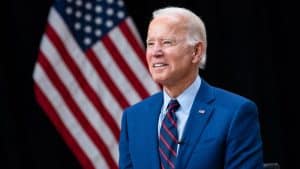
President Biden wanted to spend this week talking about his climate agenda and reducing dependence on China, but Vladimir Putin got in the way.
Even as Biden was outlining sanctions against Russia as punishment for the invasion of Ukraine, his administration pushed forward: on Thursday, it published a slew of reports on supply-chain vulnerabilities laid bare by the pandemic, and how it plans to address them.
The reports cover everything from vaccine-making materials to semiconductors, but among the key focus areas is cultivating domestic battery manufacturing. Biden’s solution is government funding — billions of dollars — to jumpstart innovation along the EV supply chain, from lithium extraction to battery recycling. The money will come from the bipartisan infrastructure bill, which I wrote about in October.
With surging prices of battery minerals like nickel, lithium and cobalt adding to his inflation woes, Biden focused his presidential powers further up the supply chain this week. On Tuesday, he held an event with California Governor Gavin Newsom to tout federal backing for two companies – MP Materials, which processes rare earth elements used to make magnets for EV motors, and Berkshire Hathaway Energy, one of three companies testing methods for sustainable lithium extraction in California’s Salton Sea.
There’s plenty of risk for failure. As Joe Lowry, a lithium mining consultant, pointed out to me, none of the companies working in the Salton Sea have demonstrated that their technology, known as direct lithium extraction, can work on a commercial scale. And as my colleague David Baker has reported, other firms have tried and failed in the past.
In a few months, the Department of Energy will begin the process of doling out $6 billion in grants for battery production, with about half of that earmarked for domestic supplies of materials and battery recycling.
Battery executives are lining up, including Ryan Melsert, a former Tesla executive who is now the chief executive officer of American Battery Technology, a Nevada startup focused on both mining and recycling battery metals. Melsert, who helped design Tesla’s gigafactory in Nevada, believes he’s figured out a way to process metals that’s both cleaner and more efficient than what’s typically done in China.
He’s already won a Department Of Energy grant for a project with General Motors, Ford, and Stellantis to demonstrate his company can take the automakers’ old battery packs, recycle them, and convert them to cathode materials for new cells.
Melsert says it’ll be a few years before there are enough old EVs on the road to feed his recycling plant. In the meantime, he’s relying on consumer electronics, scrap from battery plants, and EVs recalled for battery fire risk.
“We keep seeing very large mass recalls of electric vehicles — hundreds of thousands of vehicles at a time,” he said. “So recalls play a large part right now, and the defects and manufacturing waste.”
Even so, it’ll be a long time before domestic companies alone can fulfill automakers’ demand for battery materials, especially as electric vehicle production keeps expanding. Chris Burns, another ex-Tesla employee trying to tackle U.S. supply chain gaps, agrees that keeping up with demand is the biggest hurdle. Burns is CEO of Novonix, which is building a plant in Tennessee to make synthetic graphite for batteries, which he says can extend their life.
“Consumers want it to be domestic, car companies, and the administration wants it to be domestic, but there simply aren’t enough players right now,’’ Burns said of battery materials and processing companies. “That’s one of the challenges we will face through this decade.”
